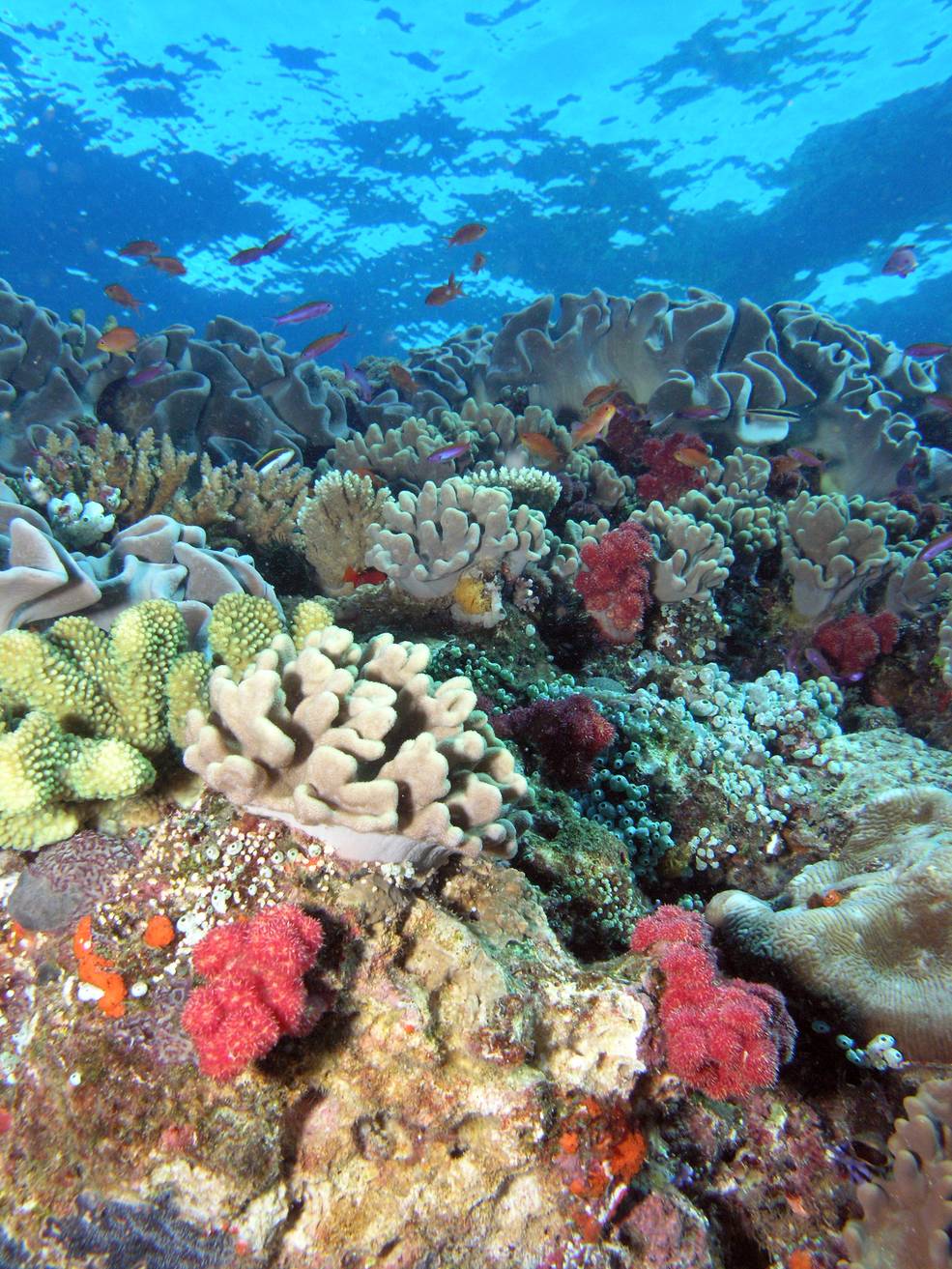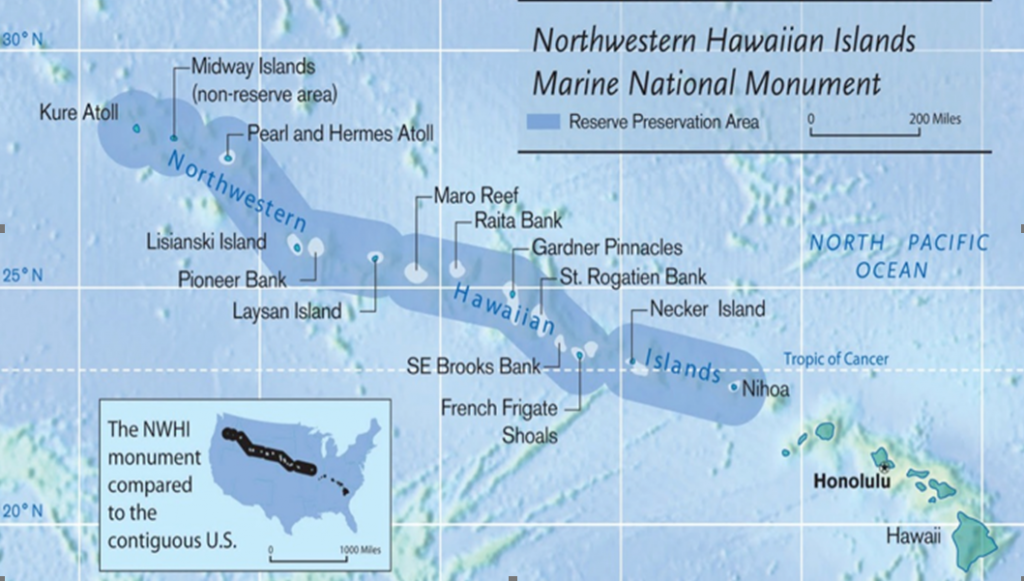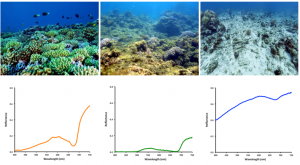
NASA and the United States Naval Research Laboratory (USNRL) are studying links between weather and reefs in a study deployed in Hawaii. Dr. Steve Ackelson, NRSL, who earned his PhD in Oceanography from the University of Delaware, is examining the health and future of the Hawaiian Coral Reef, which extends from Hawaii northwest for hundreds of miles into the North Pacific Ocean. “Coral Reefs will cease to be an economically viable tourist attraction within 50-75 years,” said Ackelson. “Coral reefs are big business. Around the world, from Australia to the Bahamas to Hawaii and many places in-between, coral reefs are a multi-billion-dollar tourist attraction. Yet, they are dying right in front of our eyes. And though we are trying to figure out a way to help save them, there is really very little we can do. Right now, I am focusing on the health of the Hawaiian coral reef ecosystem and really not how they can be saved.”
“Am I depressed by what I am seeing? I don’t know, maybe depressed is the correct word. Disappointed maybe? I love coral reefs, and it has been my life’s work studying them, so seeing coral reefs around the world in the worsening state of health that most of them are is a very, very sad state of affairs for me personally,” said Ackelson.

Ackleson leads a team of other experts in his field in a project involving the Hawaiian Coral Reef. Divers and drone kayaks were deployed in the waters around Hawaii to take electromagnetic radiation samplings of the coral reefs to determine their health. Spectrometers, including the Hyperspectral Infrared Imager (HyspIRI), was installed on NASA’s Earth Resources aircraft, also known as the ER-2. The ER-2 and the spectrometers onboard accomplish in a few minutes what took days or even weeks before.

“The health of a coral reef can be determined by its electromagnetic footprint. The amount of time saved by the ER-2 will allow us to gather data and then determine the health of this ecosystem much quicker. Hopefully we can get this information out to people who can then work on what needs to be done to help this complicated symbiotic relationship between the coral and the algae that live on them”, Ackleson said.

Eventually, the spectrometer technology can be added to satellites which would allow a greater amount of data from a larger place to be gathered even quicker than today.
Weather conditions and water temperatures may be driving the change in the health of the coral reef in Hawaii and elsewhere around the globe. Ackleson says the coral reef ecosystems as a whole are stressed. “Right now, the number one reason for this stress is changing water temperatures, with the waters near the reefs becoming too warm. Different types of algae that live on the corals in a symbiotic relationship are very sensitive to changing water temperatures. As little as a degree Celsius change can cause some types of algae to virtually disappear. Once the algae are gone, there is usually about a year’s time that the corals can survive without them. If they return within a year, there is some damage done to the ecosystem, but it can recover. If the algae do not return after about a year’s time, the corals ‘bleach’ and basically the ecosystem becomes a dead one. That one year period of time danger zone is where we sit right now after last winter’s strong El-Nino event in the Pacific that warmed some waters several degrees Celsius.”
Another problem being noticed with Pacific Ocean coral reefs is the acidification of the water. “Just like minute changes in temperature can cause the algae to leave, changes in the pH of the water can have the same effect. Though currently not as big of a problem as the waters warming around the reefs, in the future I expect the acidification problem to become just as large.” Ackleson continued, “Right now, the Pacific Ocean is the only ocean where we see the problem of acidification rearing its ugly head somewhat.”
For now, the Pacific Ocean appears to be the only ocean suffering from acidification. “Carbon dioxide levels are on the rise in the atmosphere. We just passed 400 parts per million (ppm) carbon dioxide in our atmosphere for the first time in recorded history in March of 2016. We currently sit at 405 ppm. Before the Industrial Revolution occurred, we were at 280 ppm. The oceans do a great job of absorbing some of the excess carbon dioxide, but obviously not good enough. As the carbon dioxide is absorbed into the ocean, it combines with the water to form carbonic acid,” explained Ackelson about the role atmospheric gasses have with the chemical make-up of the oceans. “With the Pacific Ocean being the largest and oldest ocean in the world, it has absorbed more carbon dioxide in it than any other ocean. As the carbon dioxide enters the ocean, it is shuttled to the depths where only upwelling, the bringing to the surface of deep and cold ocean waters, can bring the now carbonic acid solution to the surface where it can impact the health of the coral reefs. The Pacific Ocean has tremendous amounts of upwelling along the west coasts of North and South America. Oyster farms along the Pacific Northwest coast have directly suffered from this upwelling of the now acidic water. The acidic waters from the west coasts of North and South America are slowly heading west and are now just getting to where the coral reefs are located near Hawaii and even off of the coast of Australia. The problem of acidification on the coral reefs will only increase as the concentrations levels of carbonic acid also increases.”
The studies pursued by Ackelson’s team will help examine how coral reefs and water quality vary, in both space and time, over the huge distance encompassed by the Hawaiian Islands and the 1,200-mile-long Papahanaumokuakea Marine National Monument north of the main islands. Beyond the instruments used and data collected this year, Ackleson’s team is contrasting findings with data collected from 2010 to 2014 with a different hyperspectral imager.